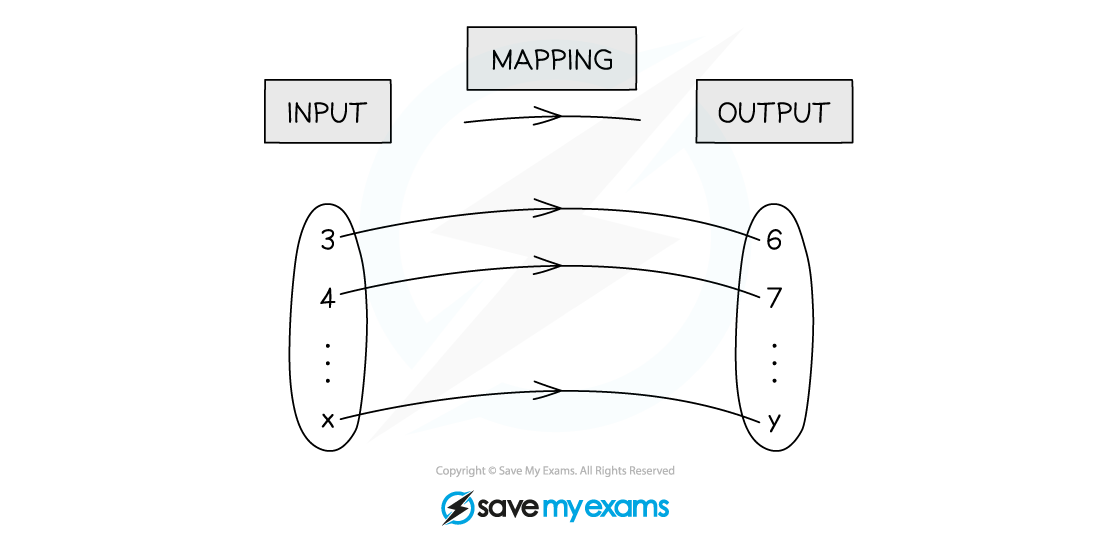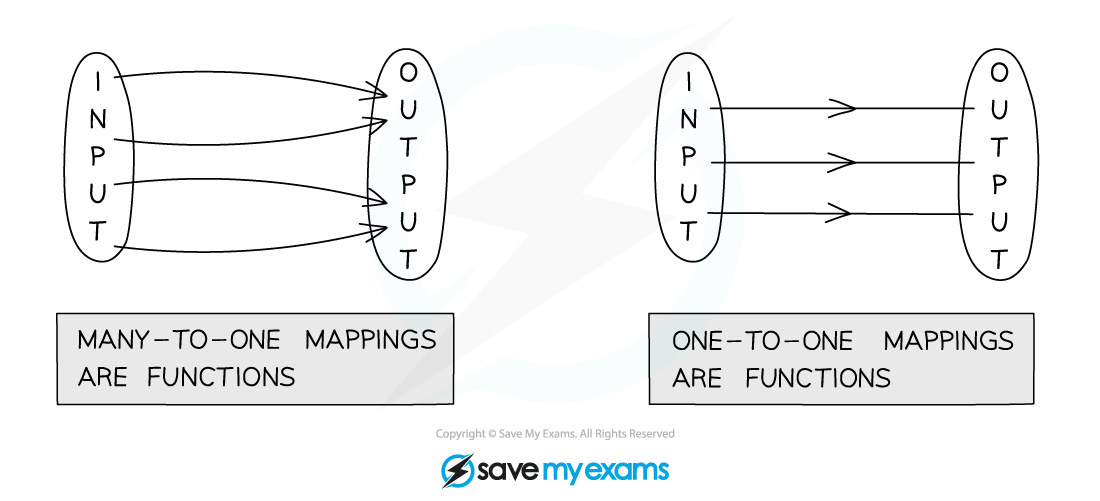Language of Functions (DP IB Analysis & Approaches (AA)) : Revision Note
Did this video help you?
Language of Functions
What is a mapping?
A mapping transforms one set of values (inputs) into another set of values (outputs)
Mappings can be:
One-to-one
Each input gets mapped to exactly one unique output
No two inputs are mapped to the same output
For example: A mapping that cubes the input
Many-to-one
Each input gets mapped to exactly one output
Multiple inputs can be mapped to the same output
For example: A mapping that squares the input
One-to-many
An input can be mapped to more than one output
No two inputs are mapped to the same output
For example: A mapping that gives the numbers which when squared equal the input
Many-to-many
An input can be mapped to more than one output
Multiple inputs can be mapped to the same output
For example: A mapping that gives the factors of the input

What is a function?
A function is a mapping between two sets of numbers where each input gets mapped to exactly one output
The output does not need to be unique
One-to-one and many-to-one mappings are functions
A mapping is a function if its graph passes the vertical line test
Any vertical line will intersect with the graph at most once

What notation is used for functions?
Functions are denoted using letters (such as
etc)
A function is followed by a variable in a bracket
This shows the input for the function
The letter
is used most commonly for functions and will be used for the remainder of this revision note
represents an expression for the value of the function
when evaluated for the variable
Function notation gets rid of the need for words which makes it universal
when
can simply be written as
What are the domain and range of a function?
The domain of a function is the set of values that are used as inputs
A domain should be stated with a function
If a domain is not stated then it is assumed the domain is all the real values which would work as inputs for the function
Domains are expressed in terms of the input
The range of a function is the set of values that are given as outputs
The range depends on the domain
Ranges are expressed in terms of the output
To graph a function we use the inputs as the x-coordinates and the outputs as the y-coordinates
corresponds to the coordinates (2, 5)
Graphing the function can help you visualise the range
Common sets of numbers have special symbols:
represents all the real numbers that can be placed on a number line
means
is a real number
represents all the rational numbers
where a and b are integers and b ≠ 0
represents all the integers (positive, negative and zero)
represents positive integers
represents the natural numbers (0,1,2,3...)

What are piecewise functions?
Piecewise functions are defined by different functions depending on which interval the input is in
E.g.
The region for the individual functions cannot overlap
To evaluate a piecewise function for a particular value
Find which interval includes
Substitute
into the corresponding function
The function may or may not be continuous at the ends of the intervals
In the example above the function is
continuous at
as
not continuous at
as
Examiner Tips and Tricks
Questions may refer to "the largest possible domain"
This would usually be
unless
,
or
has already been stated
There are usualy some exceptions
e.g. square roots;
for a function involving
e.g. reciprocal functions;
for a function with denominator
Worked Example
For the function :
a) write down the value of .

b) find the range of .


You've read 0 of your 5 free revision notes this week
Unlock more, it's free!
Did this page help you?
